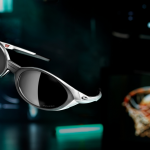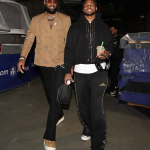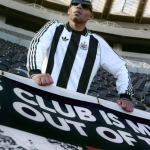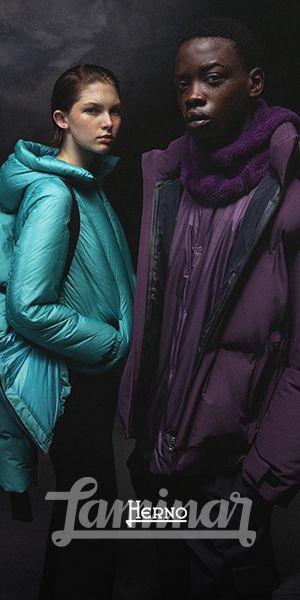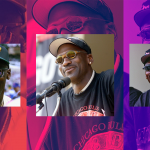
How Michael Jordan brought Oakley into the mainstream
From engines to skis, passing through the most famous sportsman in the world
May 28th, 2020
Tying a brand to a known face of sport is a trend that has been going on for decades and the values of sport represent fertile ground for those who want to invest in a sector that grows more and more every year. The brand makes a player's (economic) fortune, the player makes a brand's fortune (in terms of awareness). For almost two decades, Michael Jordan has been the sportsman capable of shifting the world balance, the best-known man in the universe and in some ways the legend that changed the landscape with his sponsorship agreements.
The story that the most innovative companies in the world were born in a garage is now known: Apple, Google, Amazon, Hewlett-Packard, Disney, Harley Davidson were all born in a box (often for rent). Oakley must be added to this list. The year is 1975 and the story starts right from a Californian garage, where a 26-year-old boy, Jim Jannard, decides to invest his free time to solve a problem that no one has ever solved. He loves motocross races, but every time it rains those races become less spectacular due to the slipperiness of the knobs, covered with simple plastic. Together with his loyal English Setter, he spends his nights mixing different materials to create one that replaces the slippery one and allows pilots to raise their level regardless of weather conditions. After months of tests, tests and experiments, Jim creates a type of rubber never seen before: the Nonobiniinium. He tests it on his bike and it works.
He shows up at the races with his pick-up and tries to sell this product to the teams. It takes a name though. He decides to dedicate his invention to his dog, Oakley. Before long, “The Oakley Grip” makes the rounds of the drivers and a small investment of $ 300 begins to yield more and more. More and more people are coming to request Jannard's tire: from cycling teams to car stables. Wisely, "the mad-scientist" chooses to formalize his creature and within a few years he holds in his hands the patent of what we all know today as Unobtanium.
The evolution of Oakley is very rapid: from simple rubber to the production of all the most technical sports accessories, including sunglasses. In 1980 the first motocross goggles, the O-Frames, made their debut on the American market. The Oakley logo continues to turn at the speed of light and becomes the reference brand for all drivers. From engines to snow, at the same speed with which Alberto Tomba faced the curves of Bormio. 1983 is the brand's debut in the world of skiing. Two years later, the cycling market was invaded by Hurricane Oakley. With the Factory Pilot Eyeshades, Greg LeMond wins the Tour de France and allows Jennard's company to also land in Europe. The garage in Foothill Ranch, CA is no longer enough. Sport remains Oakley's core business, but lifestyle is too strong an appeal. The union of the two worlds (represented by Frogskins, one of the bestsellers in the history of the brand) gives life to a company that over the years will always produce lenses of any kind, with some excursus in the field of golf shoes, F1 shoes and sport jackets. In 2007 Jim Jannard sold the brand for $ 2.1 billion to Luxottica, the largest eyewear manufacturer and retailer in the world. Oakley boasts the beauty of 575 world patents and important collaborations with Formula 1, beach volleyball, cycling, skating, the world of BMX, surfing, golf, snowboarding, wakeboarding, triathlon, tennis, sailing, rowing, ice skating, all running activities and of course motocross.
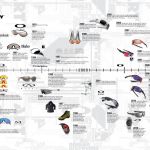
There are many athletes sponsored by Oakley: from Lance Armostrong to Shaun White, from Rory McIlroy to Fernando Alonso, from Valentino Rossi to Mark Cavendish. Michael Jeffrey Jordan is certainly one of the oldest. In “The Last Dance” MJ's style came out in all its completeness. One of the accessories seen most frequently during the ESPN series are sunglasses, most of them signed by Oakley. Jordan achieved nearly $ 2 billion in revenue thanks to endorsements and among the brands that helped to reach that figure there is also the company born in that box in Foothill Ranch in '75. Jordan's sunglasses have become a fixed appointment for all lovers of the style of the 90s who, episode after episode, went on the hunt for detail to be able to contextually and stylistically contextualize the unpublished footage of the documentary.
During the 10 episodes, MJ wore the Romeo, the Pro M Frame, the Straight Jacket, the Trenchcoat, the T Wire, the M Frame, the Eye Jacket but above all the Mars Leather, launched on the market in March 1998 and worn on the occasion of the parade for the second threepeat of the Chicago Bulls.
Being a sports icon does not just mean inspiring the generations that follow, being an example for those who idolize a certain athlete - Michael Jordan himself said that if he could go back, he would choose not to be so to avoid that every step he took was analyzed in detail - but it also means exploiting the sport business to increase net worth and above all to launch new fashion trends that increase the value of a brand that binds to sport. It is impossible to quantify how much the Bulls' # 23 contributed to Oakley's growth or how much, in the long wave of a career that ended at the beginning of the new millennium, the lines dedicated to MJ influenced the sale price of 2.1 billion in 2007. One thing is certain: Oakley has changed the way of conceiving sunglasses and Jordan has changed the way of conceiving a sponsorship contract between brand and sports athlete.














